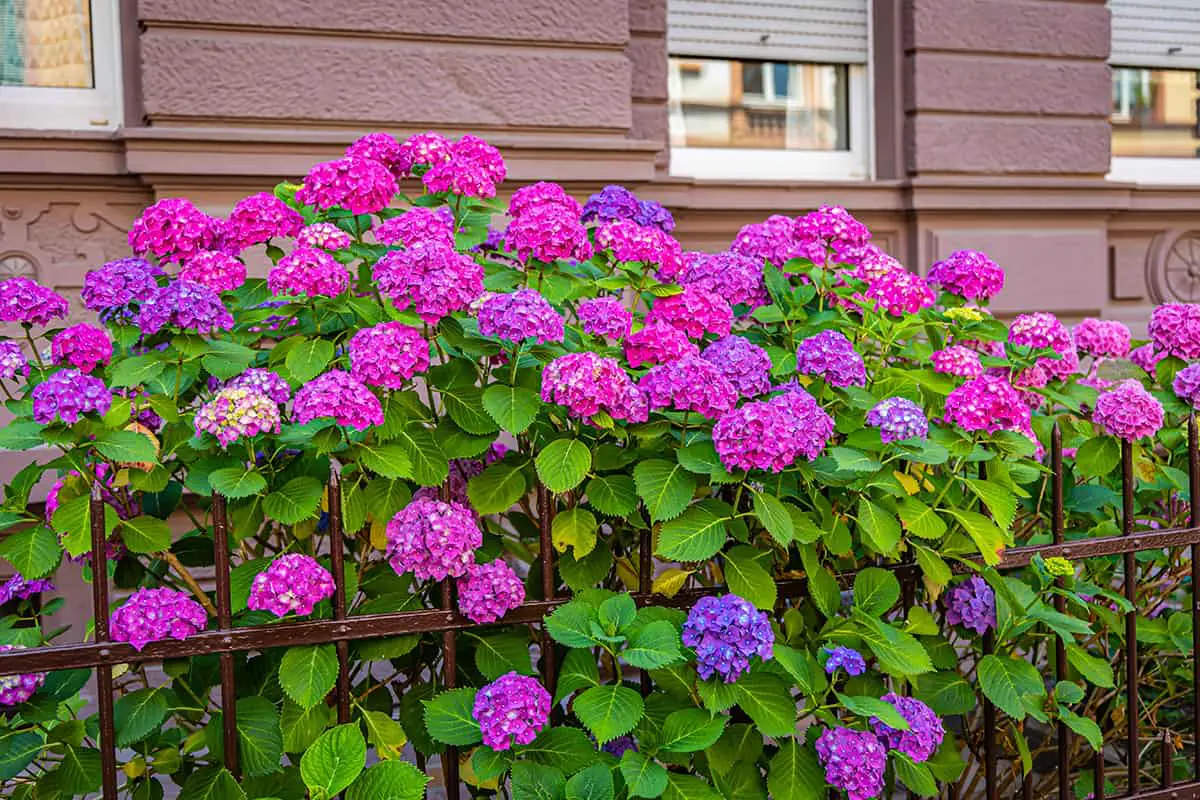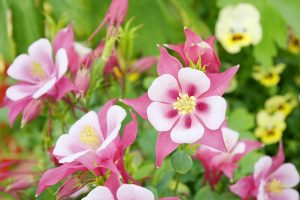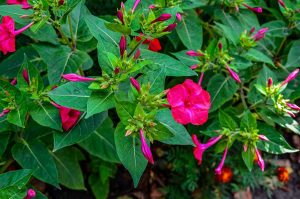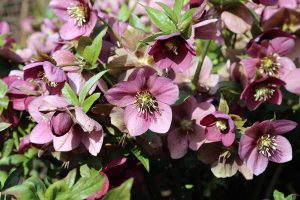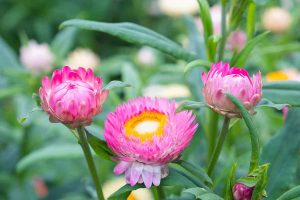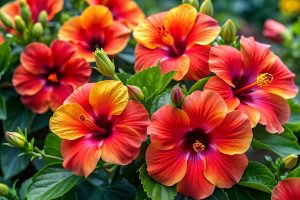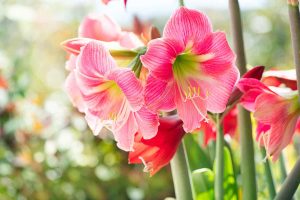Walking through a garden, it’s impossible not to be captivated by the sight of a Sunflower towering overhead, its large, vibrant bloom turning towards the sun. This moment epitomizes the allure of plants that grow big and boast huge flowers, transforming any garden space into a dramatic showcase of nature’s grandeur.
Such plants not only add a visual impact with their size and the boldness of their blooms but also bring a sense of wonder and excitement to gardeners and onlookers alike.
Table of Contents
- Sunflower (Helianthus Annus)
- Hibiscus (Hibiscus Spp.)
- Magnolia (Magnolia Spp.)
- Dahlia (Dahlia Spp.)
- Lotus (Nelumbo Nucifera)
- Amaryllis (Hippeastrum Spp.)
- Peony (Paeonia Spp.)
- Trumpet Vine (Campsis Radicans)
- Giant Water Lily (Victoria Amazonica)
- Hydrangea (Hydrangea Spp.)
- Rhododendron (Rhododendron Spp.)
- Oriental Lily (Lilium Orientalis)
- Allium Giganteum
- Calla Lily (Zantedeschia Spp.)
- Globe Thistle (Echinops Ritro)
- Anemone (Anemone Spp.)
- Camellia (Camellia Spp.)
- Tree Peony (Paeonia Suffruticosa)
- Queen Of The Night Tulip (Tulipa ‘Queen Of Night’)
- Canna Lily (Canna Spp.)
Sunflower (Helianthus Annus)

Sunflowers, with the Latin name Helianthus annuus, are known for large flowers. These annual plants thrive in full sun. You can expect blooms from late summer to frost. When you plant sunflowers, they add height and vibrancy to your garden.
These plants can reach sizes of 4 to 12 feet tall. The giant varieties are particularly striking. Their seeds are what we often eat and use for sunflower oil. By leaving the seed heads, you provide food for birds in fall and winter.
Care for sunflowers is straightforward. They require well-drained soil and plenty of sunlight. Their colorful blooms range from yellow to red. This variety makes them versatile for garden aesthetics.
When you grow Helianthus annuus, you also support local wildlife. They attract bees, butterflies, and birds. This helps maintain a healthy ecosystem in your garden.
Hibiscus (Hibiscus Spp.)
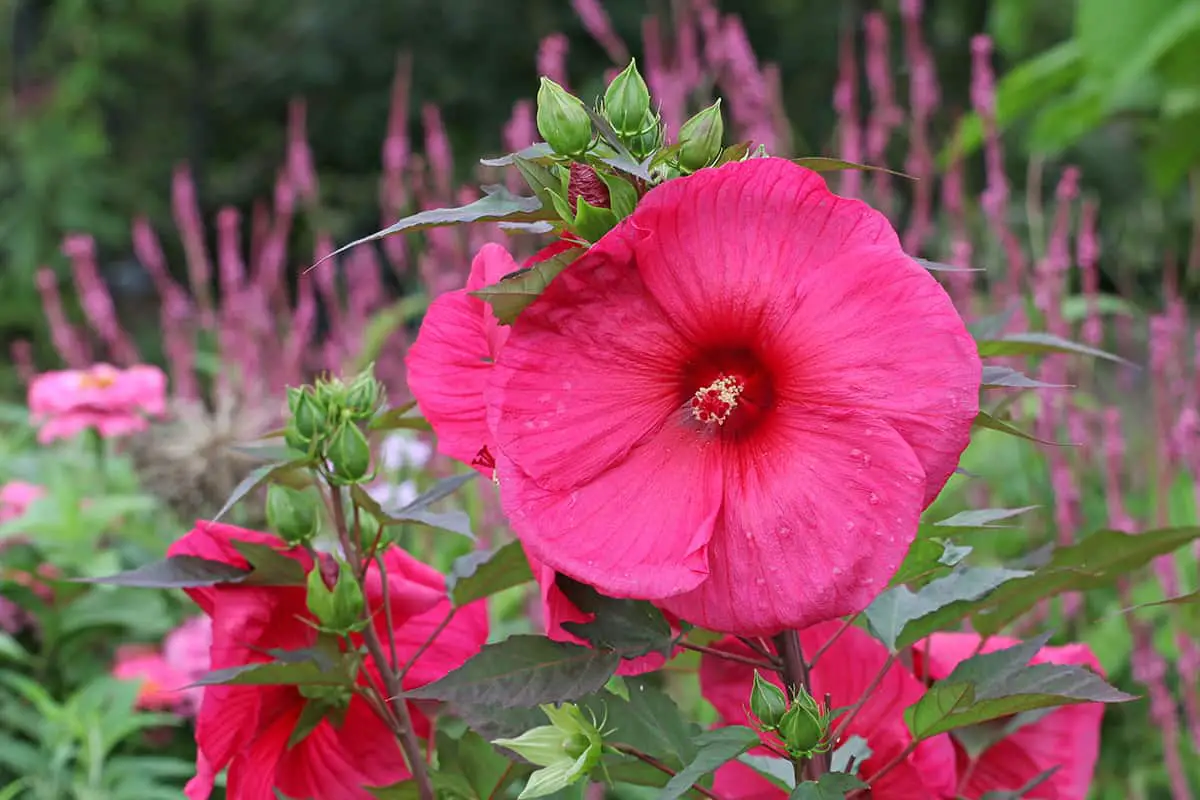
With their large, vibrant flowers, Hibiscus can be a stunning addition to your garden. Different species of Hibiscus have varying sizes and colors of blooms. Notably, Hibiscus grandiflorus boasts some of the largest flowers in North America.
These perennial plants thrive in wetland areas. Many hibiscus species prefer full sun and moist soil. Proper care ensures a show of colorful flowers yearly. As perennials, they return each season, growing larger with time.
Hibiscus care is straightforward. Prune your hibiscus in early spring. This encourages new growth and flowing shapes. Even when grown indoors, proper pruning helps sustain flower production. Pruning will not stop flowering, just delay it.
Some hibiscus reach heights of five to eight feet. They add structure and height to garden design. Striking in groups, hibiscus can also stand alone as a focal point. Expect blooms up to ten inches wide on certain varieties, like the Swamp Rose Mallow. These flowers not only add daytime beauty but also shine in the moonlight.
For long-lasting, dramatic impact, include hibiscus in your garden. Their care is manageable, and the rewards are immense.
Magnolia (Magnolia Spp.)

In the world of plants, magnolias are showstoppers. You will recognize them by their impressive size and vibrant flowers. Often, these are the main attractions in gardens.
Magnolia trees bloom with large, fragrant flowers. Some species have blooms that reach 12 inches across. They are perennials, which means you can enjoy their blooms every year. Their sizable, glossy leaves are distinctive, too, providing lush greenery.
One notable variety is the Magnolia macrophylla, known as the Bigleaf Magnolia. Its leaves can grow to be as long as 30 inches. For flowering enthusiasts like you, the Bigleaf Magnolia might be of particular interest. It sports not just the largest leaf, but also the largest flowers of any North American temperate tree.
When planting magnolias, you should consider space carefully. Some can grow over 100 feet tall. Your Magnolia will thrive in rich, well-drained soil with the right amount of sunlight and semi-shade.
If you have a smaller garden, don’t worry. There are magnolia species that are more compact. They can fit beautifully into your outdoor space without overwhelming it.
Dahlia (Dahlia Spp.)
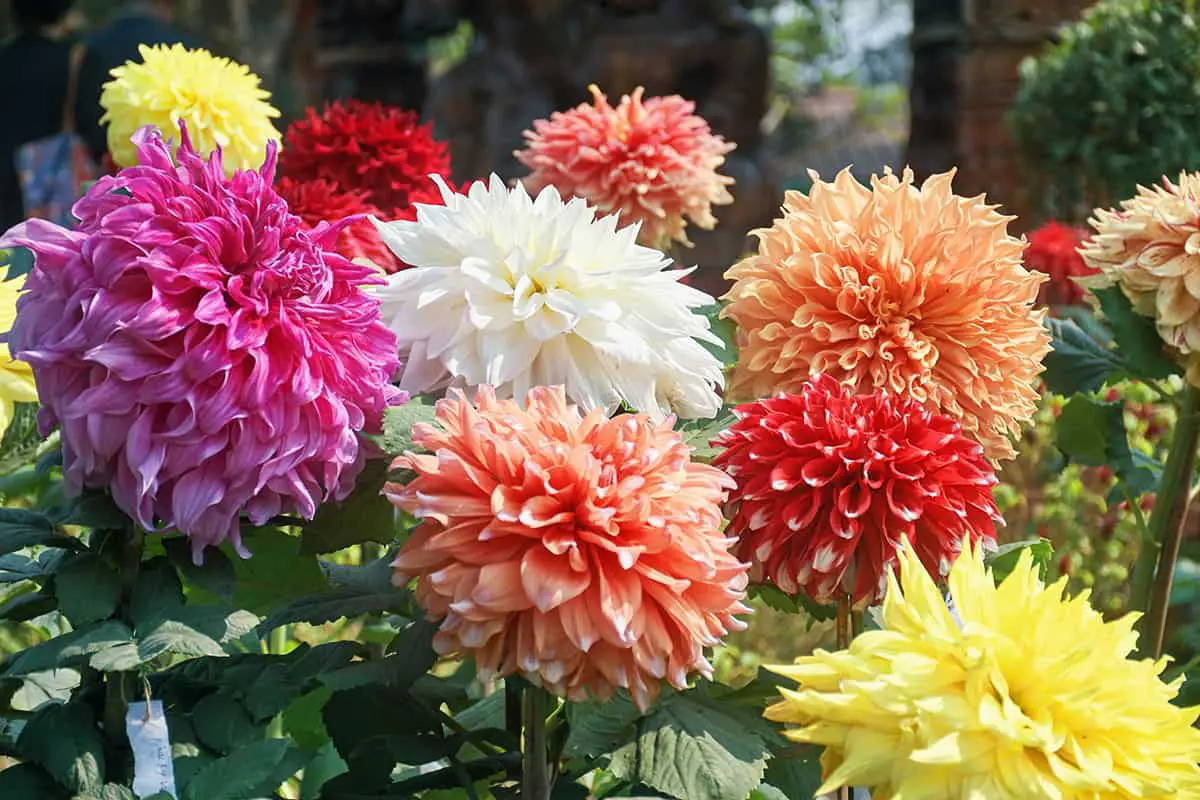
Dahlias are your ticket to a garden that makes a bold statement. With blooms that can grow to be the size of a dinner plate, these plants offer size and beauty that’s hard to miss. They’re perennials, returning each year to show off their wide range of colors and forms.
You’ll find dahlias thrive best in well-drained soil and a spot that gets full sunlight. Your success with these giants starts with planting them at the right time—after the threat of frost has passed and the soil has warmed up. This usually means springtime in most climates.
Expect to see a variety of shapes and sizes. Some dahlias such as the ‘Elsie Huston’ are bred to be heat-tolerant, which is ideal for warmer regions. Dahlias can rise anywhere from 12 inches to over 5 feet tall. For the taller varieties, consider staking them to help support their hefty blooms.
Care for your dahlias involves keeping them well-watered, especially as they grow quickly in the summer. Monthly feeding with a low-nitrogen fertilizer will keep them in good health. Regularly deadheading the spent flowers will encourage more blooms, allowing you to enjoy their grandeur longer.
Lotus (Nelumbo Nucifera)
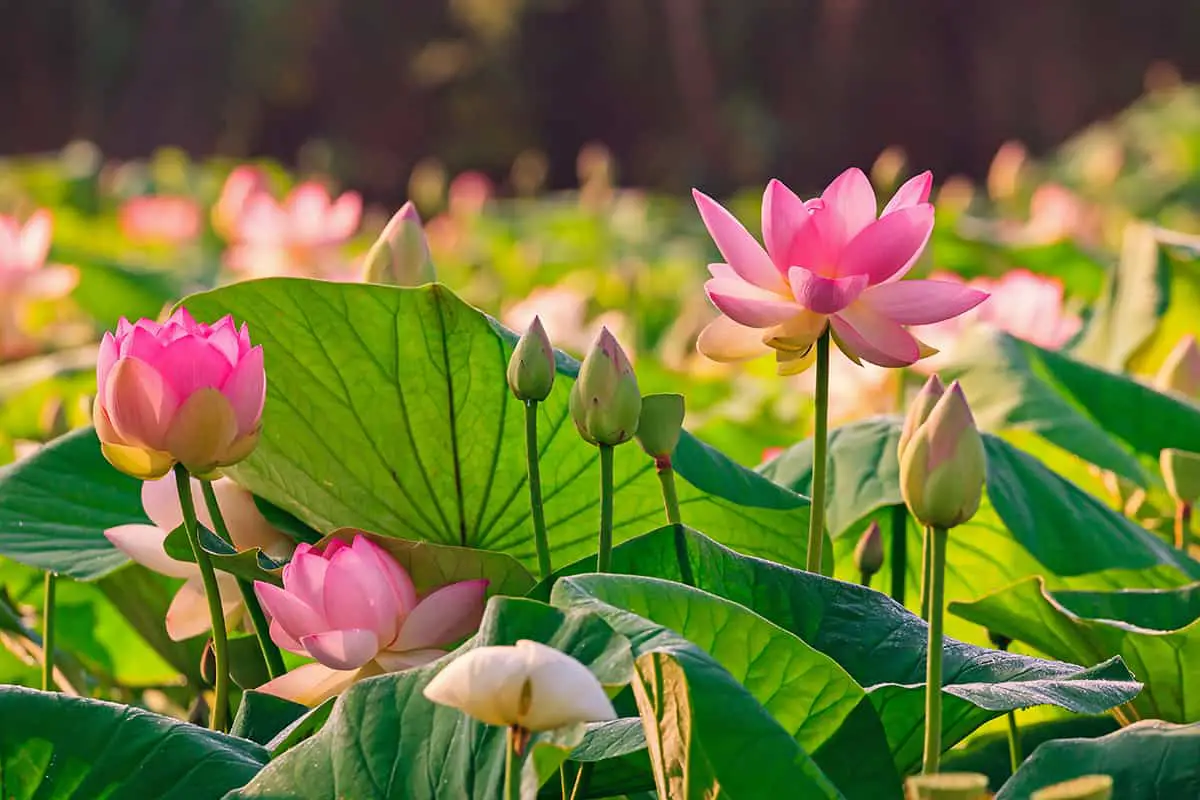
The Nelumbo nucifera, known as the water lotus, is distinguished by its enormous floral display. Each flower spans up to 1 foot in diameter. You often find these blossoms in a variety of colors, including shades of pink and white, depending on the specific cultivar. Their beauty is matched by large leaves, which can be about 2 feet across, providing a lush backdrop for the blooms.
As a versatile plant, the lotus is not only about visual appeal. Its parts are edible. The seeds and rhizomes find use in many culinary traditions, particularly in Asian cuisine. This aspect integrates nicely with ornamental gardening, allowing you to harvest while maintaining an aesthetic landscape.
Growing in sizeable aquatic environments, lotuses thrive in mud and shallow waters. They require a substantial root system before you can sustainably harvest the tubers. When considering lotuses for your garden, ensure they have enough space to flourish as they grow in a linear pattern, sequentially producing leaves and flowers.
Spring and summer are peak seasons when lotuses shine the most. During these months, you witness their growth and flowering cycle. The American lotus is a close relative found in eastern North America and possesses similar attributes, favoring similar growing conditions. It offers a variance in color, from cream to bright yellow flowers.
For a statement piece in your water garden, the water lotus Nelumbo nucifera varieties are ideal. They require ample pond space and full sun to achieve their full potential.
Amaryllis (Hippeastrum Spp.)
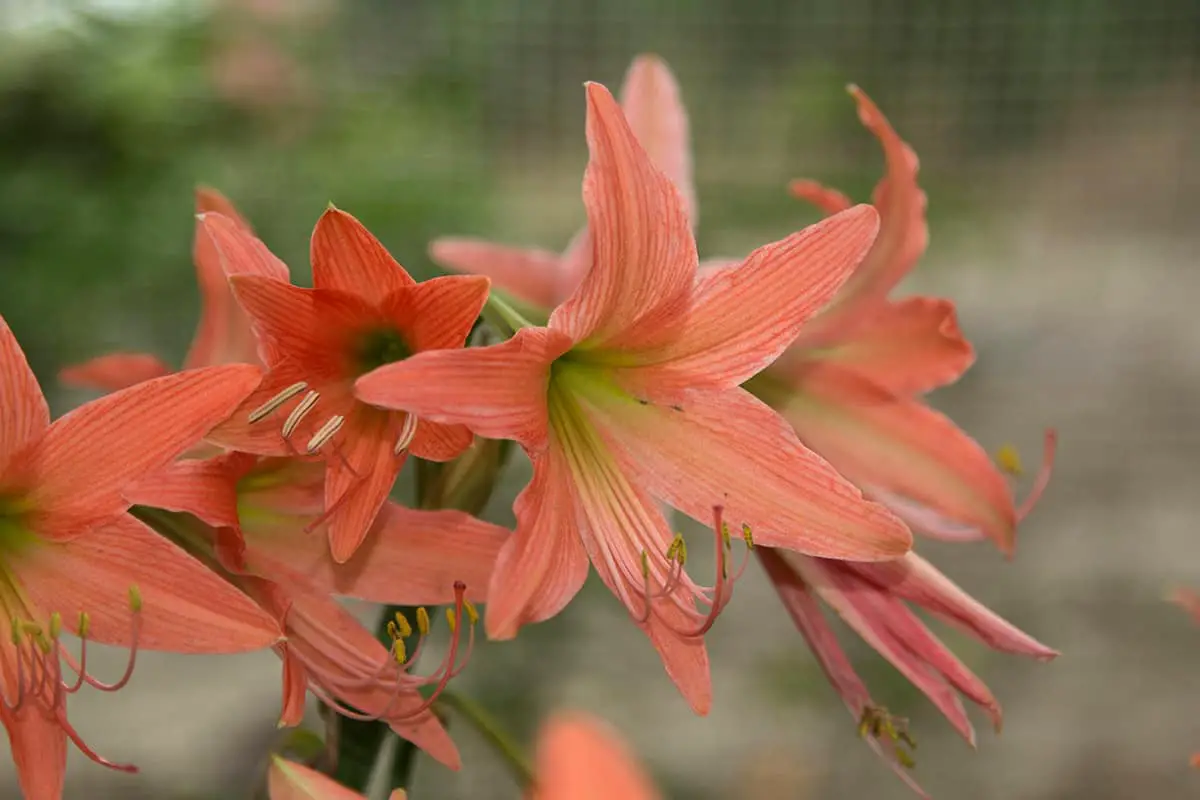
Amaryllis plants showcase impressive blooms. You’ll admire their large, often vibrant flowers. These blossoms range from red to pink and white. Some feature attractive patterns like stripes or mottles.
Care for your amaryllis is straightforward. Start with a large bulb, roughly 2-5 inches in diameter. Give it well-draining soil and consistent moisture. A bright spot with indirect sunlight helps too.
After the initial bloom, amaryllis can rebloom. This requires a period of dormancy. Cut back the leaves and keep the bulb dry for a few weeks. Then, restart water and light to encourage new growth.
Peony (Paeonia Spp.)
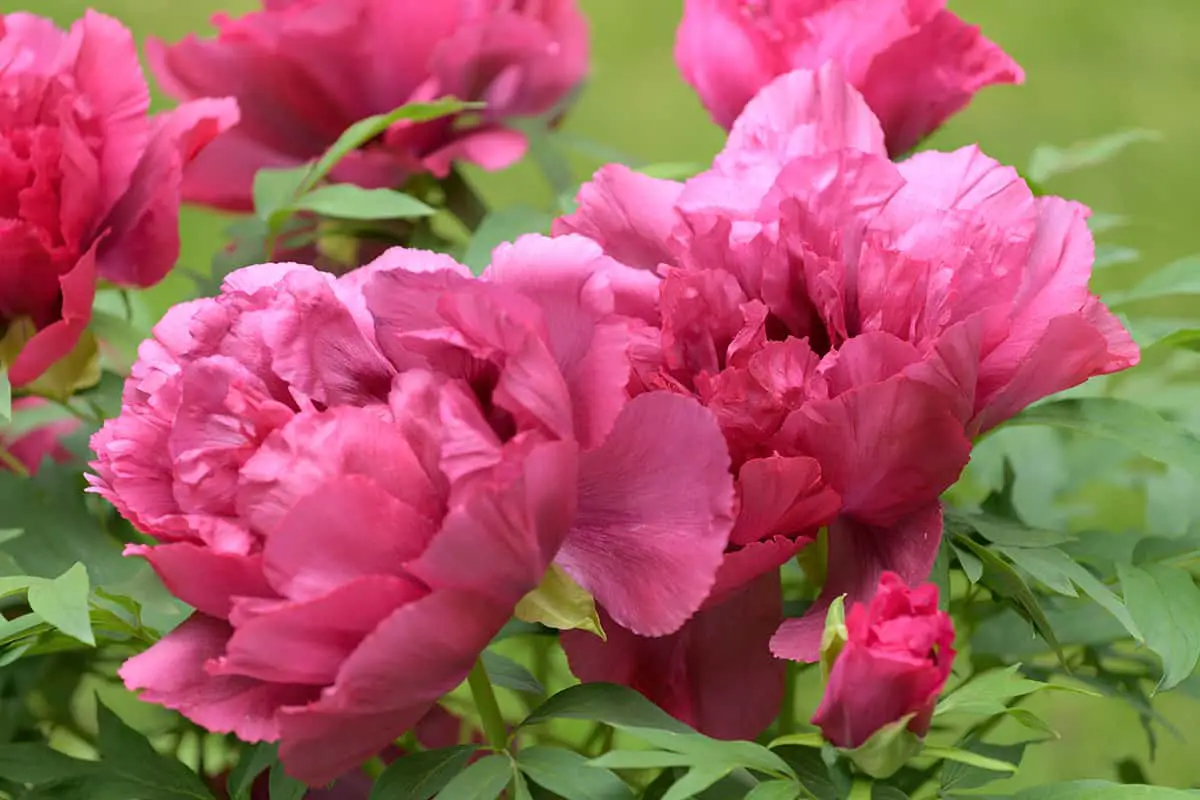
Peonies (Paeonia spp.) are striking plants that offer a variety of colors, including whites, pinks, and reds. Your garden can become an enchanting display with its blooms that range from simple to ruffled forms.
Individual Peony plants can grow to be 2.5′ to 3′ tall and wide. They thrive in zones 3-8, adapting to various climates. You’ll find their glossy, green leaves complement the vibrant blossom. The leaves are typically oval or lanceolate in shape, featuring a rich, dark green color that remains attractive through summer until fall.
These flowers demand well-drained soil and some protection from harsh winds. They bloom in mid-to late spring. Flowers are exceptionally large and one specimen plant may produce many blossoms. Not just a one-time show, a Peony plant can keep your garden lively for up to two months.
Proper care includes planting in a space with adequate sunlight and protection from tree root competition. If provided with the right conditions, a Peony plant can last for many years, with flowers growing in size and beauty each season.
To ensure these majestic blooms reach their full potential in your setting, you need to meet their chilling requirement, which is more challenging in warmer zones.
Trumpet Vine (Campsis Radicans)

The Trumpet Vine, or Campsis radicans, is a strong grower. You’ll see it climb up structures with ease, thanks to its aerial rootlets. Its native region spans the southeastern United States.
This plant is known for its sizable, showy flowers. Red-orange blooms emerge in summer. They can attract pollinators like hummingbirds and bees to your garden. The flowers are trumpet-shaped, an iconic look for this species.
In terms of care, the Trumpet Vine requires minimal effort once established. It spreads quickly and can cover large areas. Be cautious of where you plant it, as it can overtake spaces. This vine prefers full sun but tolerates partial shade as well.
For a dramatic floral display, the Trumpet Vine makes an excellent choice. It provides a lush, green backdrop with its compound leaves. They turn yellow in the fall, adding another layer of color to your landscape. Regular pruning is necessary to keep it under control.
Giant Water Lily (Victoria Amazonica)
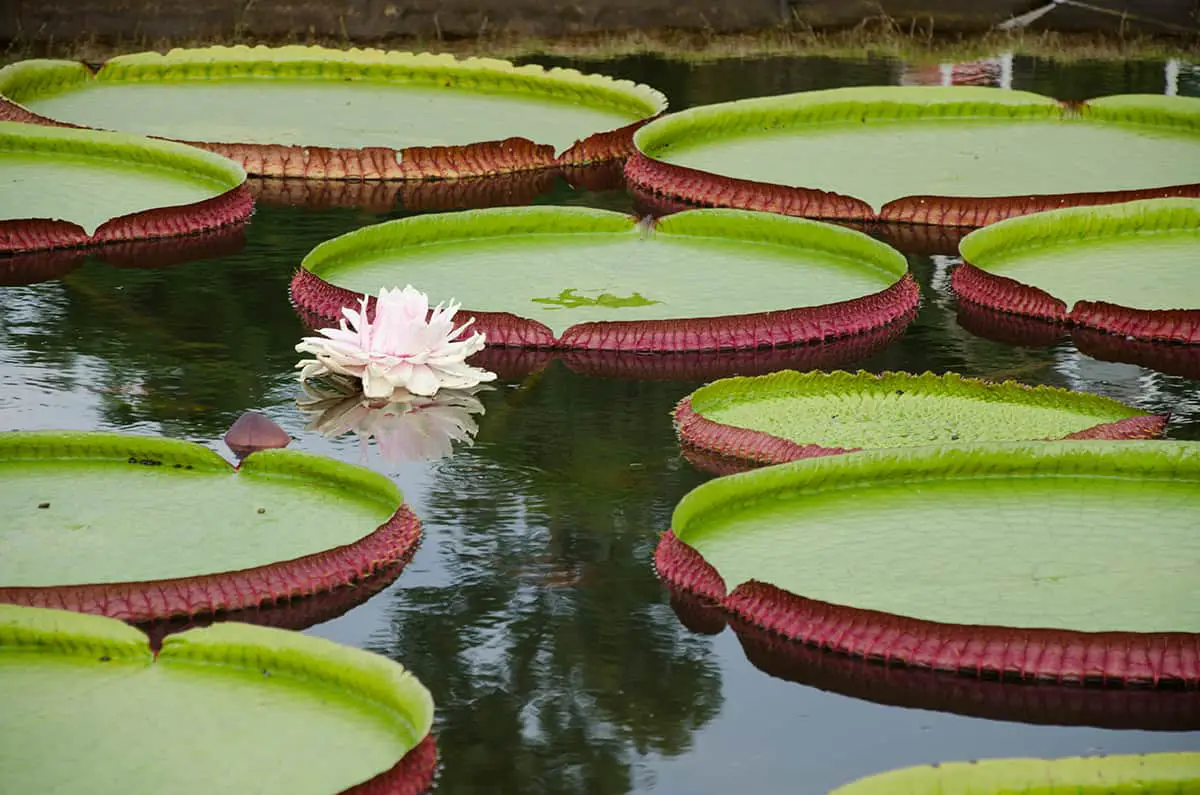
The Giant Water Lily, or Victoria Amazonica, stands out in the world of aquatic plants. When you come across this plant, its sheer size captures your attention. Its leaves can grow to an impressive 8 feet across. These lily pads float majestically on water surfaces, supporting significant weight.
You’ll find the flowers equally stunning. They bloom white and shift to pink the following day. Their fragrance reminds one of pineapple, sweet and inviting. This fast-growing plant showcases nature’s wonder through its rapid expansion, sometimes 20 inches per day.
You should be aware that the Victoria Amazonica thrives in warm climates. The lily prefers water above 75 degrees Fahrenheit. In such conditions, it grows perennially. Its unique architecture features an underbelly with a rib-like structure. This design confers the leaf’s buoyancy and strength.
Caring for this plant demands space and warm, shallow, still water. It’s known for its nighttime blooming, a spectacular event for any onlooker. The Victoria Amazonica is not just an ornamental wonder but also a subject of scientific interest due to its distinctive pollination and reproductive strategies.
Hydrangea (Hydrangea Spp.)
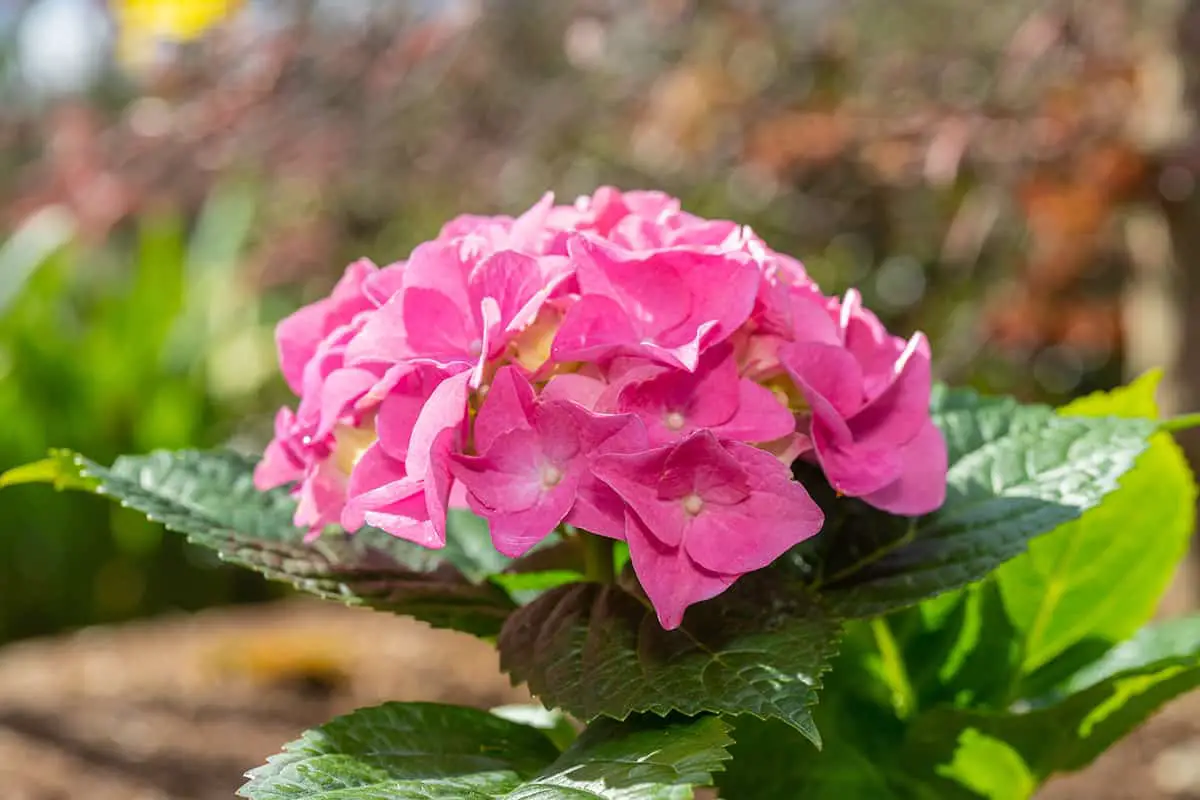
Hydrangeas are eye-catching shrubs. Their large flowers create a striking display in your garden. These blooms come in blue, pink, and white.
The flowers you admire in hydrangeas are not all fertile. The bright parts are mainly sterile. However, these shrubs still have smaller, fertile flowers that are less visible.
Your hydrangeas need the right conditions to thrive. They do well in moist, rich soil and benefit from extra protection in winter.
Pruning is essential, but timing matters. Trim them after they flower. This encourages new growth and more robust blooms in the following season.
If the soil around your hydrangeas is acidic, you’ll get blue flowers. In alkaline soil, the flowers turn pink. It’s the soil pH that decides its color.
Remember, the bigleaf hydrangea can flower on both old and new wood. It’s a resilient plant. Even if cold weather harms the buds, you can expect new blooms.
For a robust hydrangea, maintain consistent moisture. Mulch around the base to help the soil retain water. This will support the development of those signature large flowers.
Rhododendron (Rhododendron Spp.)
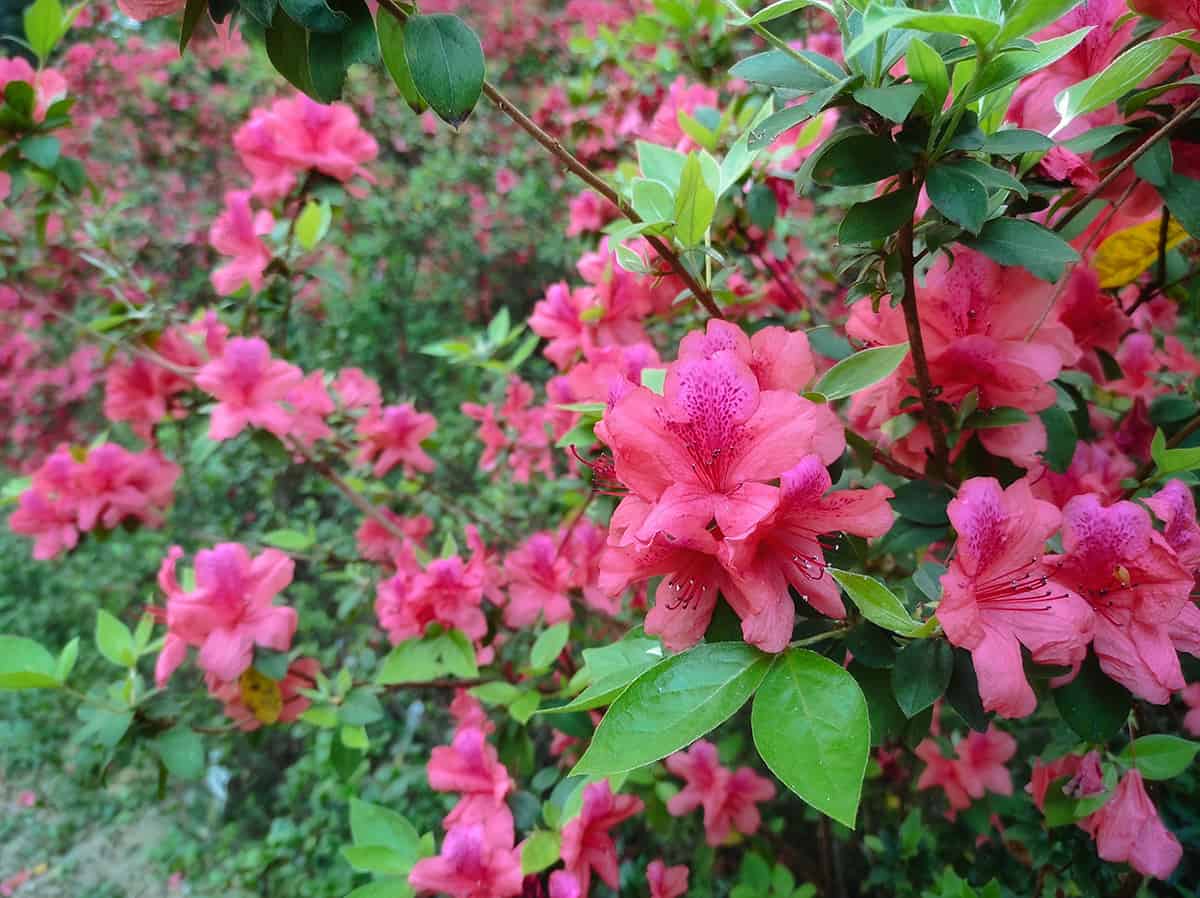
Rhododendron plants are known for their large and vibrant blooms. In your garden, these shrubs can make a bold statement. They belong to the Ericaceae family, which also includes blueberries. Rhododendrons vary greatly in size, with some species capable of reaching 20 feet in both height and spread under ideal conditions.
Choosing the right rhododendron is key. You can opt for the heat-tolerant Southgate series, or the cold-resilient P.J.M. variety. Your local climate and garden space will guide your choice. While rhododendrons can be evergreen or deciduous, their care requirements remain similar. They thrive in well-draining soil, slightly acidic in nature, and benefit from partial shade.
When planting rhododendrons, consider their space needs. They typically grow 6 to 10 feet tall and 5 to 8 feet wide. Pruning is seldom required, as they maintain a natural rounded shape. For a spectacular display, time your planting—they often bloom from late winter to early spring.
Oriental Lily (Lilium Orientalis)
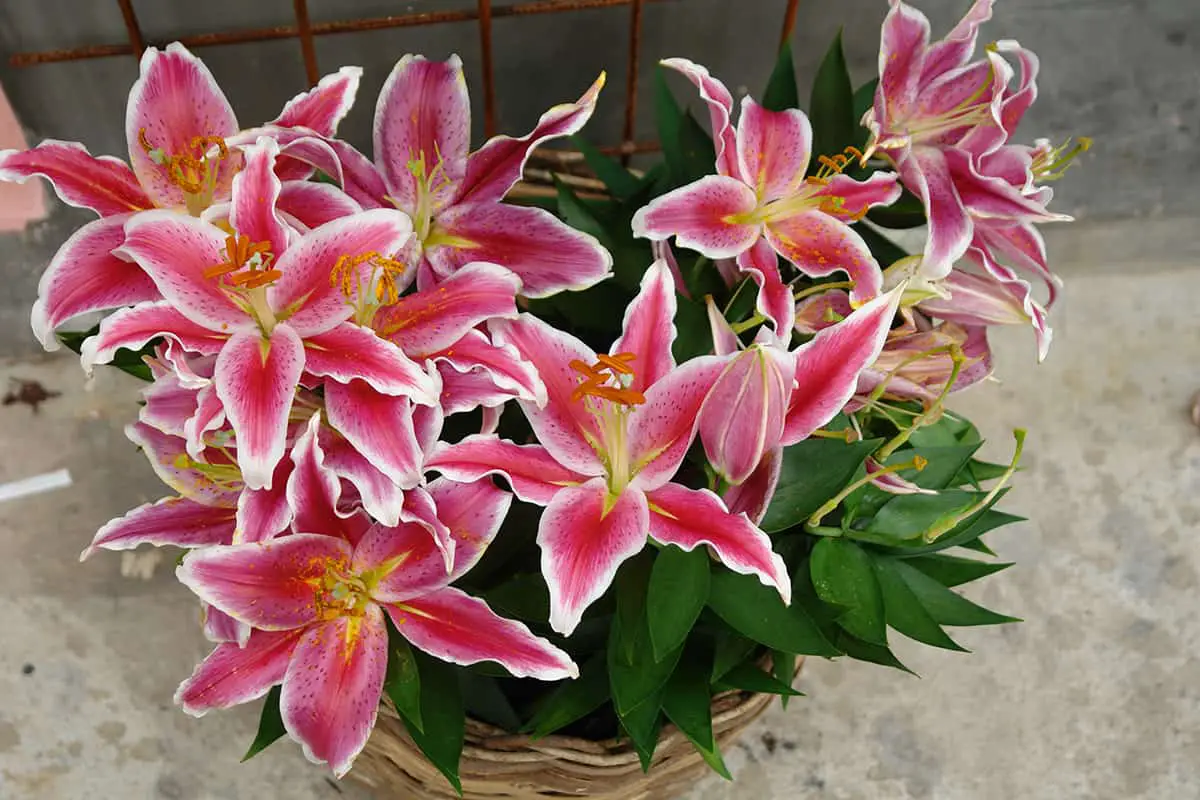
The Oriental Lily makes a striking addition to any garden with its large, fragrant flowers, bringing a splash of spectacular colors to summer landscapes. Recognizable by their broad petals and sweet aroma, these lilies are a true highlight.
For cultivation, the best time to plant Oriental Lily bulbs is in the fall. They thrive in well-drained, fertile soil and prefer a location where their leaves can bask in full sunlight while their roots stay cool in partial shade.
The appearance of Oriental Lilies is distinguished by their large blossoms, which often measure six inches or more in diameter. Their colors vary from pure white to deep pinks, often enhanced with stripes or speckles, adding to their visual appeal.
In terms of care, Oriental Lilies require consistent moisture, but it’s crucial to avoid overwatering. Post-bloom, it’s beneficial to leave the stems intact until they turn yellow. This practice helps the plant conserve energy for the following growing season.
Growth-wise, these lilies can reach up to 4 feet in height and may need support to keep their sizable blooms upright and visible.
Regarding propagation, Oriental Lilies can produce offsets from the main bulb, which can be separated to grow new plants, ensuring the continued beauty of these lilies in your garde
Allium Giganteum
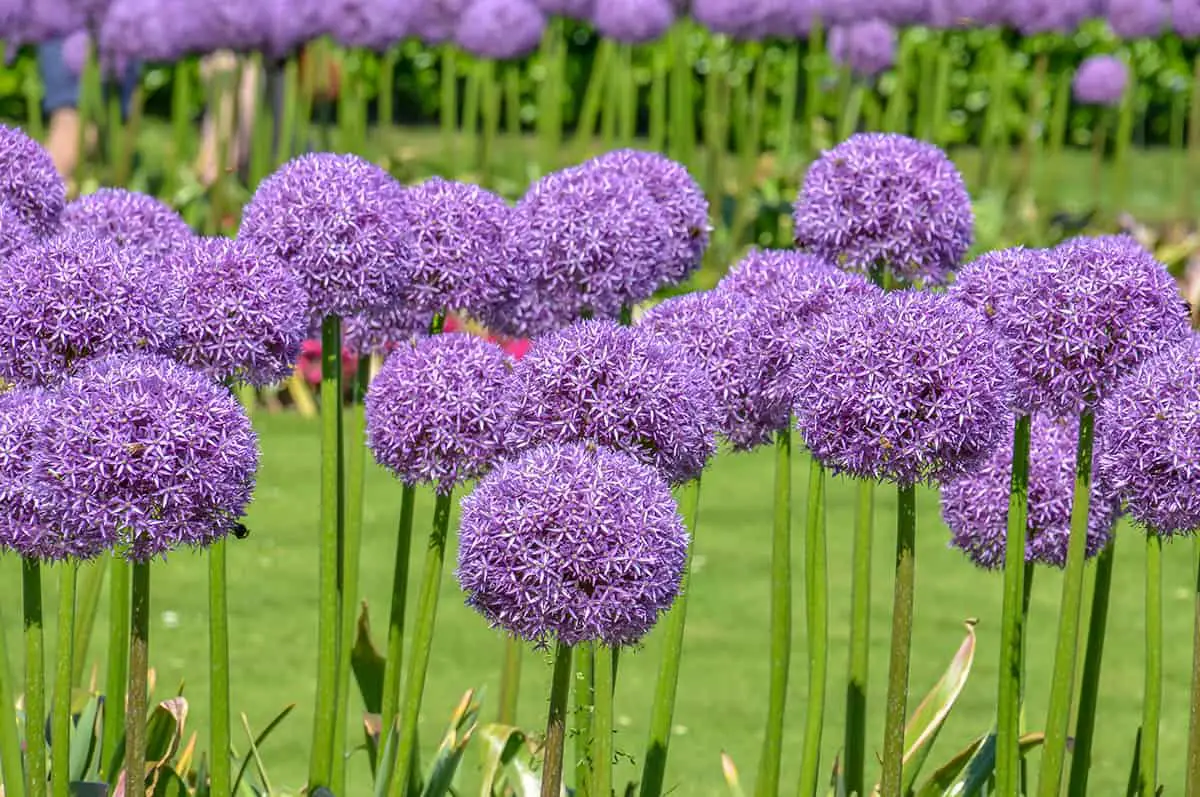
Allium Giganteum, often known as giant allium, adds dramatic flair to your garden. You’ll admire its tall stature and large, round flower heads. Typically reaching heights between 35 to 50 inches, this plant towers over many others in the landscape.
Its flowers create densely packed clusters. Each floret is small and six-parted. The vibrant blooms form a globe at the top of a sturdy, naked stem. These remarkable umbels appear in early summer and continue to impress for 2-3 weeks.
Giant allium thrives in a moist environment during its growing period. Despite tolerating summer dry spells, it’s crucial for it to have well-drained soil. To support its growth, you should plant the bulbs at a depth thrice their diameter.
This plant shares relatives with the culinary staples: onions, garlic, and leeks. Unlike its edible cousins, giant allium is grown for its ornamental appeal. Its flowers come in various hues, including shades of violet, red-purple, and white.
Calla Lily (Zantedeschia Spp.)
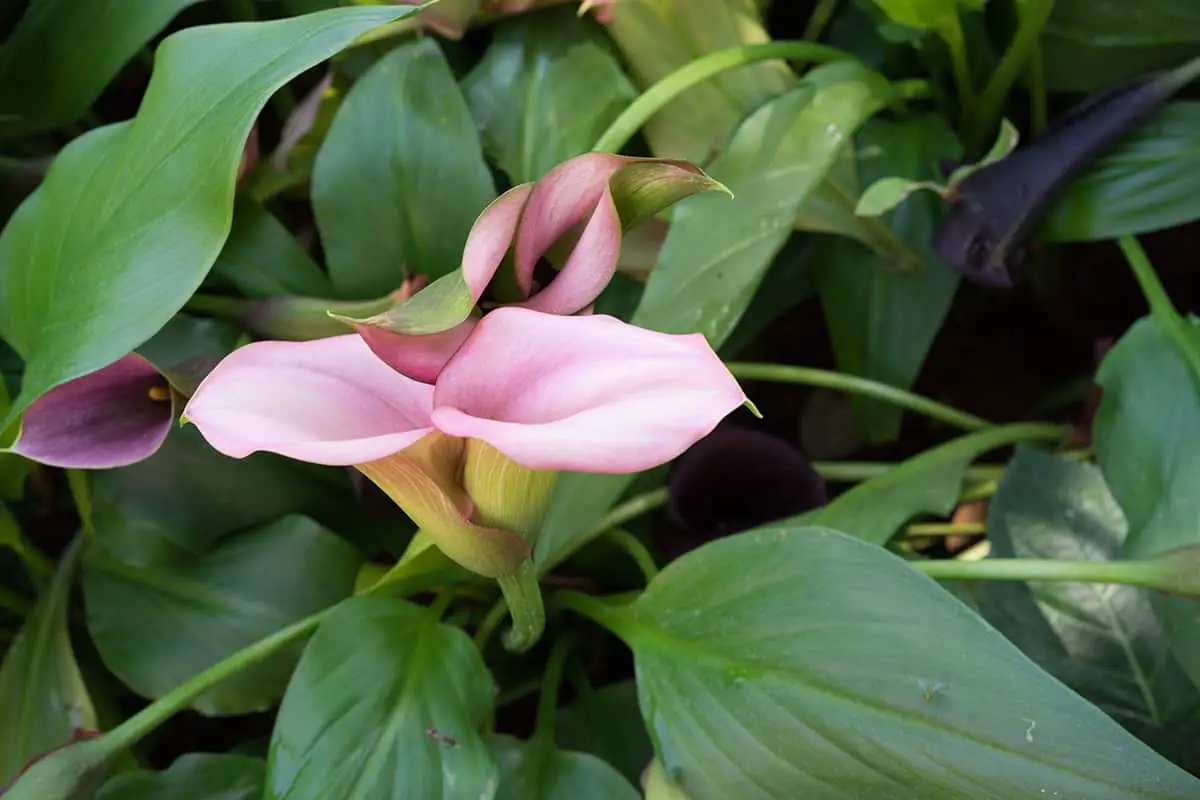
When you plant Calla Lilies, you will notice their distinctive blooms. Each flower features a spade-like shape, called a spathe, which wraps around the central spadix. The spathe can be boldly colored, adding elegance to your outdoor space.
Caring for Calla Lilies involves ensuring adequate moisture and well-draining soil. You also need to protect them from extreme cold. They thrive in USDA hardiness zones 8-10, but you can grow them in containers in colder climates.
You can propagate Calla Lilies through dividing rhizomes. This ensures your garden stays full and vibrant year after year. For more detailed planting guidelines.
Globe Thistle (Echinops Ritro)

The Globe Thistle is easily identifiable by its striking blue spherical flowers, creating a captivating presence in any garden. This plant flourishes in well-drained soil and revels in full sun, setting the stage for its unique blooms.
In terms of growth conditions, the Globe Thistle has a preference for well-drained soil and thrives under the full glare of the sun. Once established, it demonstrates a remarkable tolerance to drought, requiring minimal water to maintain its vigor.
Its flowering period stretches from mid-summer to September, during which it becomes a magnet for bees and butterflies, infusing your garden with life. The plant’s leaves are a distinctive grayish-green, accented with a hint of silver, lending a sophisticated touch to its surroundings.
When it comes to maintenance, the Globe Thistle is quite undemanding. It performs best in soil that isn’t overly fertile and requires little pruning. Moreover, it shows a strong resilience against common garden pests, making it a low-maintenance choice for gardeners.
The minimal care needs of the Globe Thistle are rewarded when its large, steel blue, globe-shaped flower clusters bloom, providing height and texture to the landscape. The blue-gray spiky leaves further enhance its appearance, making it a statement piece in your outdoor space.
Anemone (Anemone Spp.)
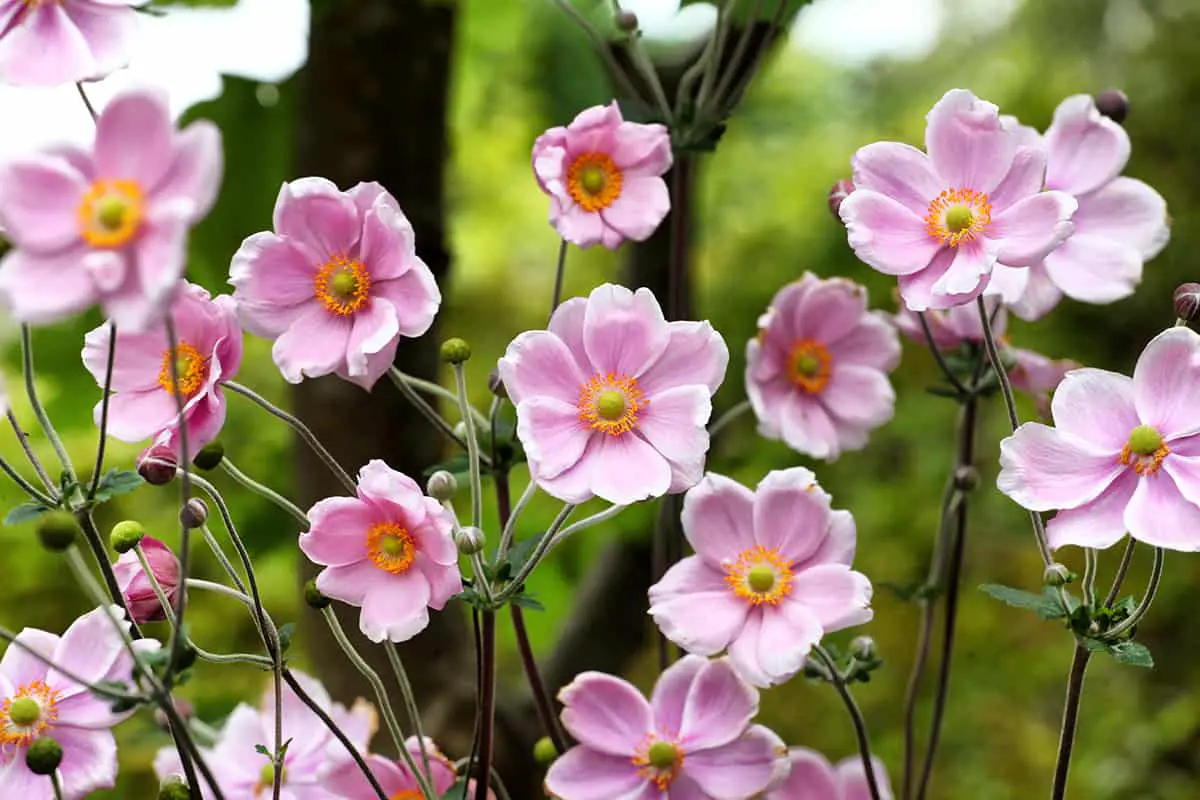
Anemones are stunning plants with big, showy flowers that make a statement in your garden. You’ll find them in a range of colors, including reds, pinks, blues and whites. Their striking appearance is due to the large, cup-shaped blooms they produce.
Planting anemones is straightforward. They grow from tubers, preferring well-drained soil and partial to full sunlight. Some species bloom in the spring while others flower in the fall. Their versatility allows you to choose from different types for continuous color.
Caring for your anemones involves regular watering and some feeding. They thrive with occasional fertilization and when deadhead flowers are removed. This care encourages more blooms and prolongs flowering.
Camellia (Camellia Spp.)
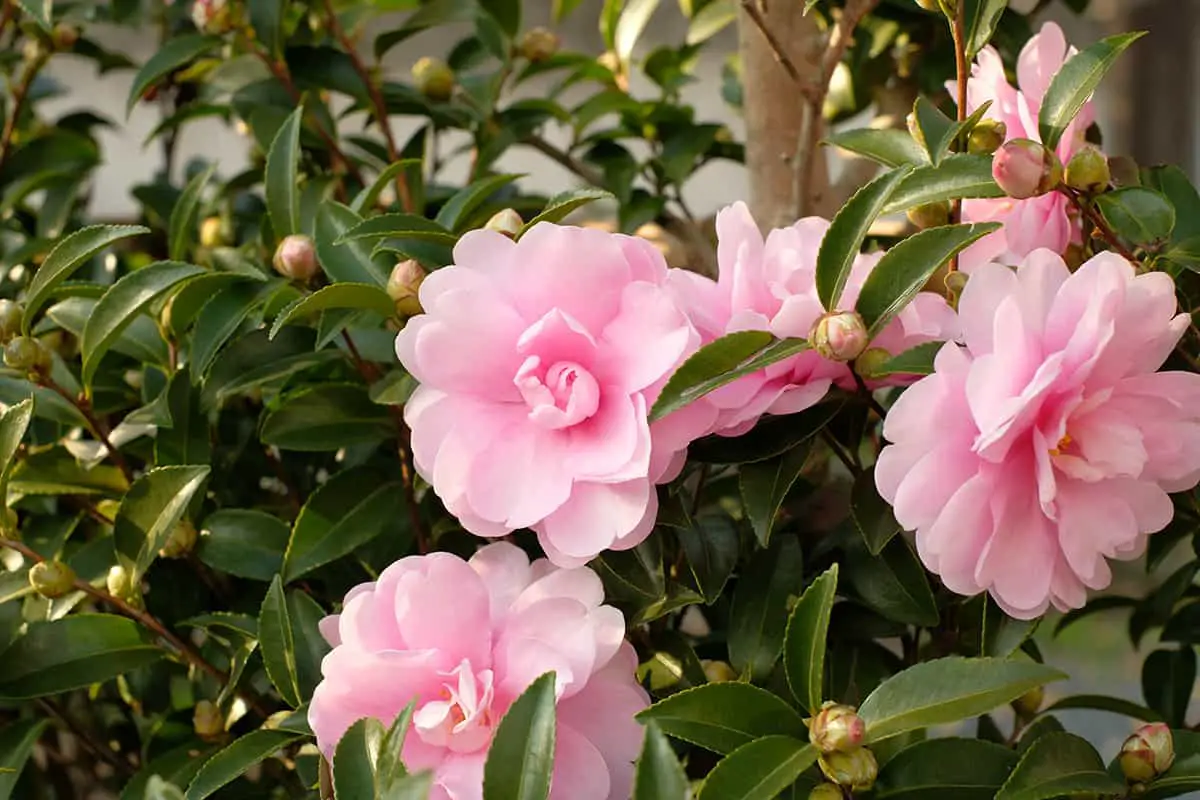
Camellias are renowned for their stunning and sizable flowers. Common Japanese Camellia (Camellia japonica) may grow to heights between 6 to 12 feet. Flowers appear from white to red, measuring 3 to 5 inches across. They bloom from late winter to early spring, adding vibrant color to your garden during cooler months.
Camellia reticulata is noteworthy for reaching up to 50 feet tall when grown as a tree. Its flowers can be the largest among camellias, boasting up to 4 inches in width. This species prefers a loosely-structured habitat, revealing its wilder nature through red and pink blooms.
The Camellia sinensis plant is exceptionally versatile and ideal for various garden uses. It thrives even in full sun, a rare trait for camellias. Its leaves remain a dense and dark green, offering year-round aesthetics to your outdoor space.
Your camellias may face pests like scale or spider mites. Fungal diseases can also affect them. With minimal care, these plants generally maintain their health and beauty.
Tree Peony (Paeonia Suffruticosa)

Tree Peony, known botanically as Paeonia suffruticosa, hosts some of the most spectacular flowers you can grow. Its huge blooms make a bold statement in any garden. You’ll find this shrub stands up to 6.5 ft. tall with deciduous foliage. In your garden, it becomes a focal point thanks to its size and springtime flowers.
To ensure your Tree Peony thrives, plant it where it gets enough sunlight. Adequate light is crucial for optimal flowering. You should also keep it from too much shade or the proximity of larger tree roots. Such conditions weaken its bloom output.
Staking may be necessary, as the Tree Peony’s stems are brittle. This precaution protects them from windy conditions. Proper soil is key: you’ll want to use fertile, well-drained ground. Regular care yields a plant that offers 75-100 flowers over its blooming period. These flowers aren’t just plentiful; they’re impressively large.
Your Tree Peony’s prime blooming period is mid- to late spring. To capture its full potential, ensure the soil is deep and fertile. Protection from wind and careful site selection away from competitive roots encourage a stunning spring display year after year.
Queen Of The Night Tulip (Tulipa ‘Queen Of Night’)
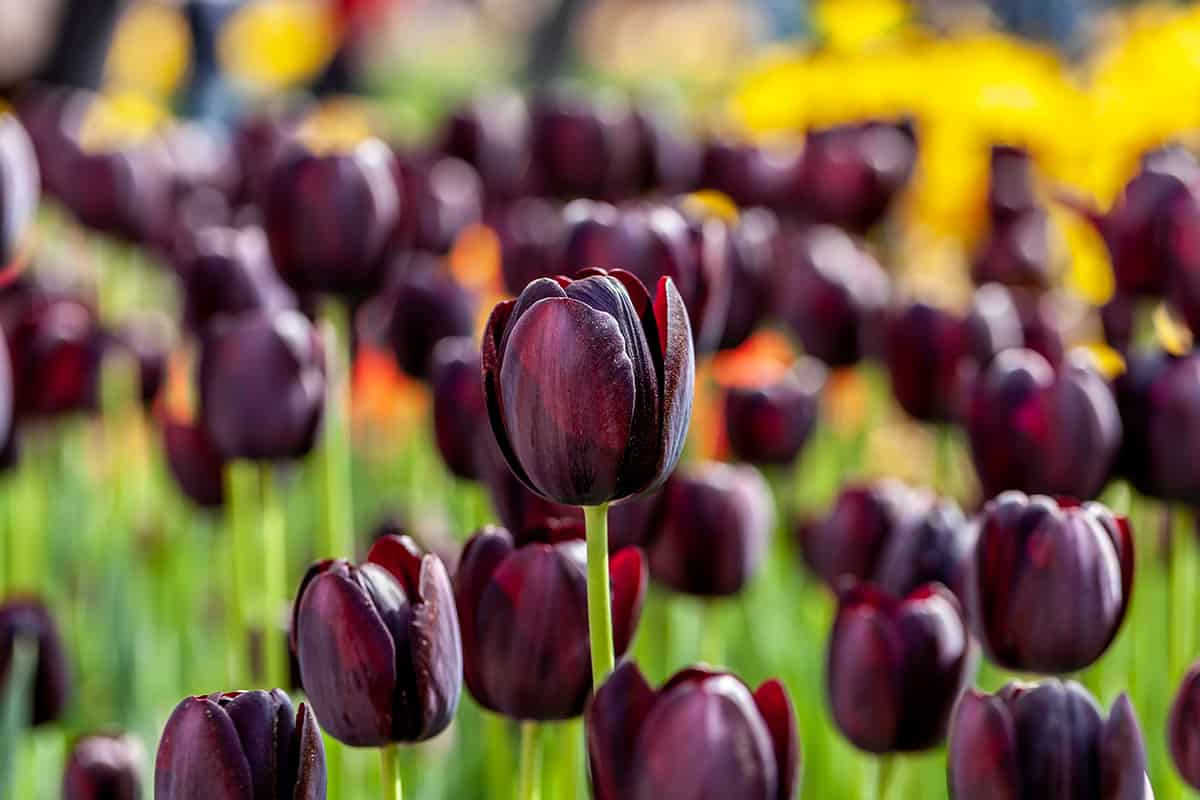
Your garden can transform with the striking Queen of the Night Tulip. This tulip variety is known for its almost black, deep purple bloom. In the spring, its unique flowers captivate many gardeners. Grown from bulbs, these tulips reach heights between 4 to 28 inches.
Planting this tulip is straightforward. Position bulbs at a depth thrice their size in rich, well-draining soil. You’ll see the best flowering results by planting them in an area with full to partial sun.
For a dramatic spring display, consider companion planting. Queen of the Night pairs well with lighter flowers or green foliage. Its dark petals offer a bold contrast in any garden setting. Expect blooms to appear in mid to late spring, offering a show-stopping sight.
To ensure health and longevity, moderate watering is key. You want the soil moist but never waterlogged.
Canna Lily (Canna Spp.)
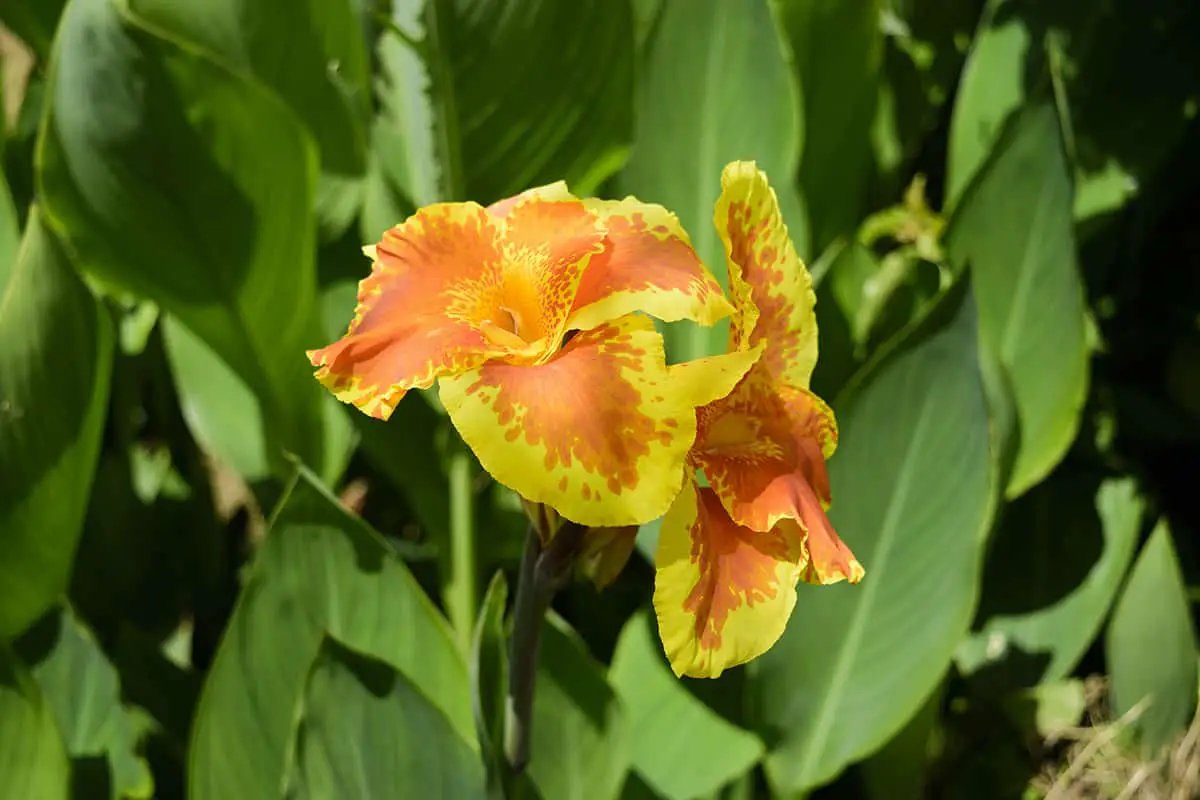
Canna lilies are ideal for your garden if you love large, showy flowers. This tropical plant can grow striking blooms up to 8 feet tall. They belong to the Cannaceae family, which includes a variety of species with different colors and patterns. You can enjoy the beauty of canna lilies in a range of environments because they adapt well to different soil types.
For the best growth, position your canna lilies in full sunlight. They prefer moist, well-drained soils. A slightly acidic pH can benefit their growth. Knowing when to plant is key; insert the rhizomes after the last frost in spring to avoid damage to the plant.
Ensure adequate space for your canna lilies. Plant rhizomes around 3 feet apart and 4-6 inches deep. This spacing allows each plant enough room to flourish. They require consistent watering to keep the soil moist. However, avoid waterlogging as it can lead to root diseases.
Your efforts will be rewarded with large, vibrant flowers. Some varieties even showcase colorful foliage adding to their visual appeal. With their erect growth habit, canna lilies have a statuesque presence in your landscape. You’ll find these plants elevate the style of any garden with their tropical flair.
Remember, cultivars may vary in height and width. Select a variety that fits your space and enjoy the grandeur of canna lilies.
